Meadowbank, Mercer, Murrayfield, and Straiton: The Hibs stadium merry-go-round of the early Nineties
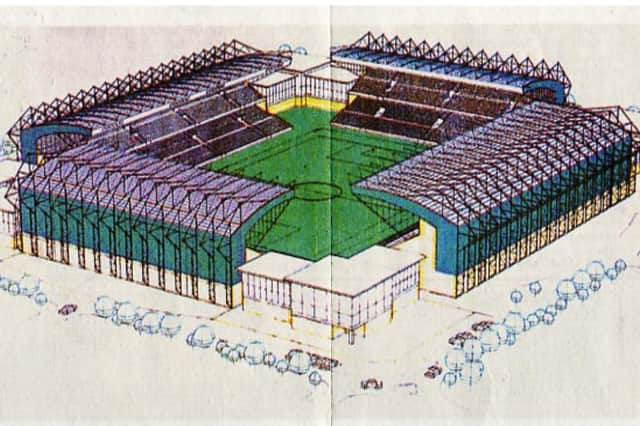

Few are likely to recall the protracted window in which the club was exploring the viability of leaving Easter Road and moving to either a new stadium or a shared stadium with another team.
The idea of Hibs vacating their stadium first reared its head in the summer of 1990 during Mercer’s takeover bid but June was barely a week old when the Hearts chairman’s plans for a £200 million “super stadium” on the western outskirts of the city were dashed.
Hibs at Meadowbank?
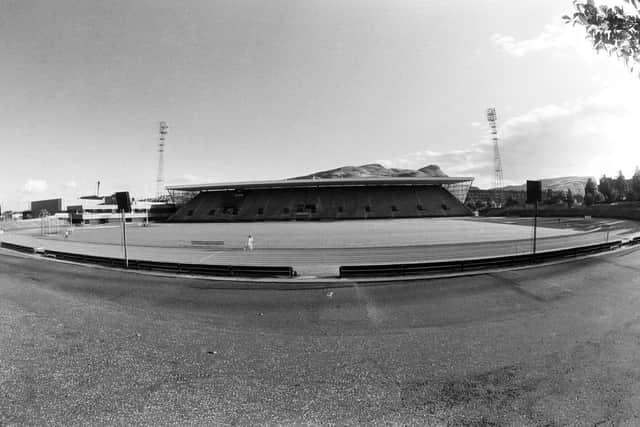

Advertisement
Hide AdAdvertisement
Hide AdLater that month it was suggested that Hibs could play matches at the council-owned Meadowbank stadium. This would clear the way for Easter Road to be redeveloped, depending on planning permission. Council leader Mark Lazarowicz believed the move made sense given the “general trend towards multi-use stadiums".
Hibs Managing Director Jim Gray was also in favour but with Meadowbank Thistle not consulted the plan was shelved – for now.
Hibs suffer Easter Road blow
BySeptember Mercer had been defeated, but Hibs still had a stadium in desperate need of an upgrade. A deal to buy land on Albion Road for £140,000 that would allow the club to move its offices out of the stadium and set up commercial and entertainment facilities to boost turnover was withdrawn by the council, citing ongoing speculation over the club’s financial state and talk of a potential stadium move. The club was told the issue could be revisited if they remained in situ.
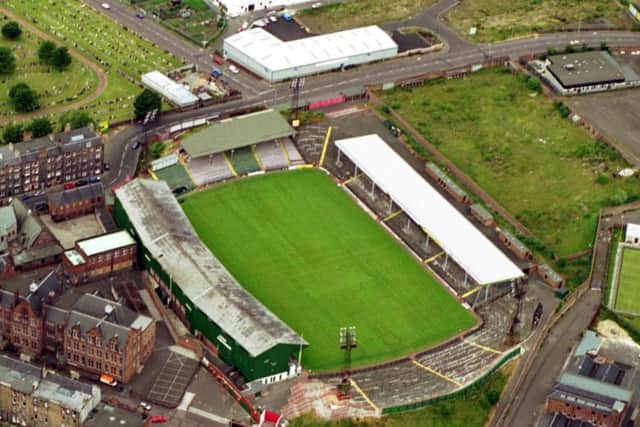

Stadium move announced
In early November 1990, Hibs announced their intention to relocate to a site east, or south, of Edinburgh within three or four years. The new stadium would cost £25m and have a capacity of 25,000. Alternative options were to refurbish and move to Meadowbank for between £20m and £25m or renovate Easter Road for a cost of £15m.
Advertisement
Hide AdAdvertisement
Hide AdTen days later Hearts and Hibs dismissed suggestions of groundsharing at a new stadium at Millerhill. Hearts had drawn up blueprints for a 30,000-seater stadium as part of a 50-acre development including shops and a hotel. However …
U-turn as Hearts-Hibs share mooted
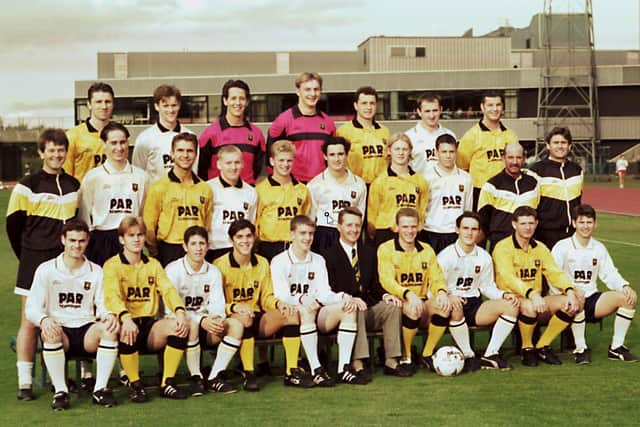

Three months later, in February 1991, Hearts and Hibs appeared to have buried the hatchet after the takeover saga and the prospect of the clubs sharing a custom-built stadium was back on the table. The main stumbling block was likely to be whether Hibs could raise the financial stake but sites at Drum, Ingliston, Newton, and Straiton were shortlisted.
Hibs chairman Alister Dow and Hearts counterpart Mercer agreed all options were on the table: refurbish both Easter Road and Tynecastle; build separate new stadia, or share a newly-built stadium. Mercer held talks with the Scottish Rugby Union about Murrayfield, while Meadowbank was again put forward as an option for Hibs.
Hibs strike out on their own
Less than 12 months later, Hibs unveiled plans to move to a new purpose-built stadium at Straiton on land owned by Sir Tom Farmer, who had taken control of the club in the wake of the failed takeover bid. Provided the club got planning permission, there were hopes the first game could be played at the new 25,000-seater arena by 1994 with the £50m development including tennis courts, practice pitches, and a hotel.
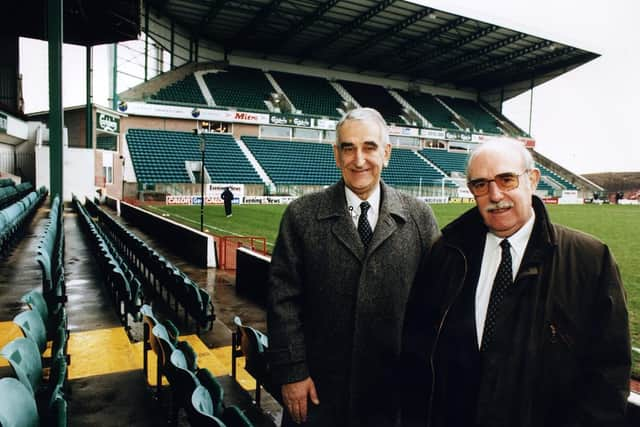

Advertisement
Hide AdAdvertisement
Hide AdHibs chairman Douglas Cromb hired experts to assess the cost and practicalities of upgrading Easter Road to comply with the Taylor Report requirements, with the outcome that it would be not be financially viable. Groundsharing with Hearts remained an option, and later that month the Royal Highland and Agricultural Society put forward for consideration plans for a new stadium at Ingliston to be shared by Hearts and Hibs, although the area didn’t suit Hibs.
Meadowbank groundshare
Four months later, Hibs and Meadowbank Thistle jointly announced plans to groundshare at Straiton. Meadowbank would likely use a smaller, 3,000-capacity pitch at the new development while retaining the option to play at the larger, 25,000-seater stadium built for Hibs. This all but killed off any plans for Hearts and Hibs to groundshare.
By August 1992 Lothian Region planning chiefs had rejected all of the plans for new grounds “in their current form” – Hibs at Straiton, Hearts at Hermiston, and Ingliston – but conceded there was a possibility one of the three plans could be updated to allow for an exception to be made.
Towards the end of the year, Hibs' proposed move to Straiton received support from planning bosses with the club set to vacate Easter Road by 1994. However, since May, the projected capacity had fallen to 20,000.
Advertisement
Hide AdAdvertisement
Hide AdBy mid-December Hibs got the go-ahead to build the new stadium at Straiton but Hearts’ dreams of a 30,000-seater venue at Hermiston were shattered. Cromb hoped to take inspiration from Aberdeen’s Beach End in designing a new Hibs ground while there was an invitation to visit Anderlecht, whose custom-built corporate facilities at their Constant Vanden Stock Stadium were of interest.
Tables turned
In June 1993, Hearts vice-chairman Pilmar Smith branded Hibs “a little naughty” for extending an offer to share the new Straiton arena.
Cromb replied: “Hearts seem to be pretty touchy about the subject. Perhaps because we thought of the idea first, they perceive the new stadium as solely a Hibs project.”
The prospect of the rivals sharing remained on the table but by mid-November, Hibs learned that Straiton would not be ready until the start of the 1995/96 season, and Cromb contacted the SRU to discuss the possibility of playing bigger games at Murrayfield.
Taylor Report deadline and Straiton issues
Advertisement
Hide AdAdvertisement
Hide AdBy 1994 Hearts and Hibs were sweating over the Taylor Report deadline. Neither club was likely to meet it.
Hibs were eventually given the green light to start the 1994/95 season with thousands of uncovered seats on the South terracing which, while reducing the capacity from 22,115 to 13,500 allowed the club to meet the deadline.
Before 1994 was up, the Straiton plan hit the buffers and by December Hibs abandoned the move altogether and unveiled plans to revamp Easter Road.
A message from the Editor:
Thank you for reading this article. We're more reliant on your support than ever as the shift in consumer habits brought about by Coronavirus impacts our advertisers.
If you haven't already, please consider supporting our sports coverage with a digital sports subscription.
Comment Guidelines
National World encourages reader discussion on our stories. User feedback, insights and back-and-forth exchanges add a rich layer of context to reporting. Please review our Community Guidelines before commenting.